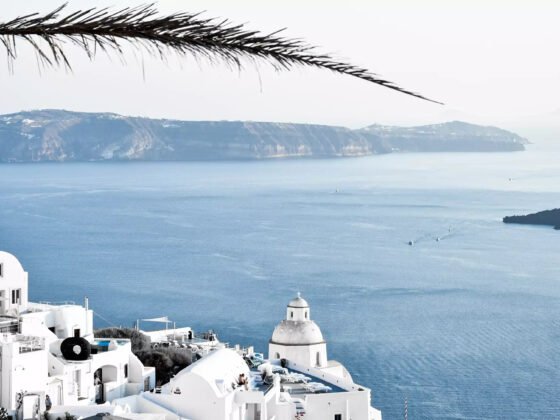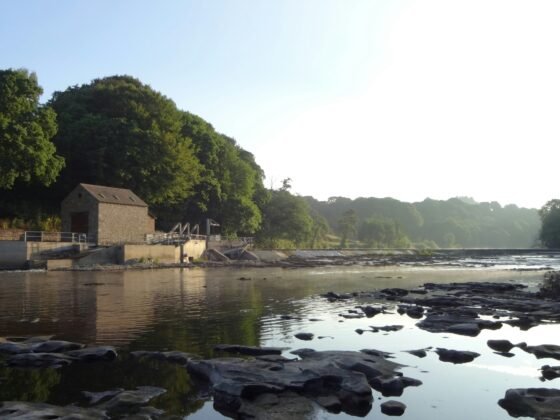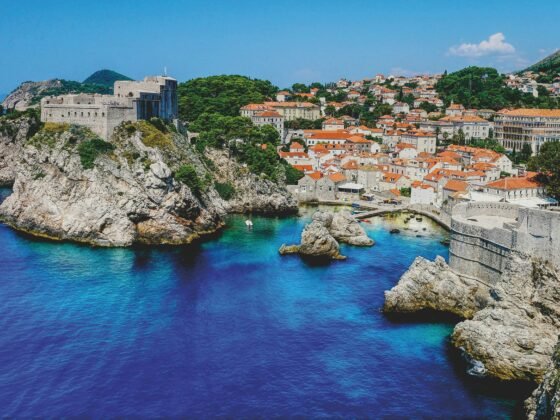Egypt is the birthplace of civilisation and home to landmarks such as the Pyramids of Giza, the Red Sea and the River Nile. Travellers can explore over 7,000 years of history in the ancient city of Cairo, hike Mount Sinai and try desert sports in the Great Sand Sea and the White Desert. Luxor is home to ancient Thebes with abundance of historical artefacts and for a rest stop Dahab offers a relaxing coastal getaway and of course Sharm el-Sheikh on the Sinai Peninsula is a perennial favourite with both sun worshippers and scuba divers drawn to the Red Sea. Its sounds clichéd to say that Egypt has something for everyone, but if you’re looking for a hot climate coupled with an even hotter cultural scene, then you’ll be in your element!
Great Pyramid of Giza
The last remaining of the Seven Wonders of the World, the Great Pyramid stands along with 2 other smaller and younger pyramids near Cairo. Construction began in BC 2584 and the Great Pyramid makes up the trio of the Giza Necropolis. The Great Pyramid must be the most photographed landmark in the world. Experiencing the Ancient Egyptian architecture up close for yourself far outweighs any photo!
The Great Pyramid of Khufu is the most intact of the three pyramids. It was constructed out of nearly 1,300,000 blocks of limestone and stands at 137m (455ft). A limited amount of tickets to enter the pyramid at E£100 are sold each day. Visiting hours are from 7 a.m. – 7:30 p.m. Admission if you wish to video and photograph is E£60 and E£30 if you do not.
The two smaller pyramids can be entered depending upon availability, and the tickets are cheaper. The best time to discover the pyramids and Sphinx is during the cooler hours of the day, as you will be outside walking. Protecting yourself from the heat, drinking water, wearing walking shoes and taking care to use sun protection will help make your trip enjoyable.
Alabaster Mosque
Also known as Mohammad Ali Mosque, this beautiful mosque in the middle of the Citadel of Cairo, is so named because of the substantial amounts of alabaster used in its construction and decoration. This Ottoman style mosque was built during 1830-1848 and became the resting place of Mohammad Ali Pusha. The mosque offers spectacular views of every angle of Cairo, including the Great Pyramid off in the distance. It is important to keep in mind when visiting any mosque in Egypt to dress modestly, for both men and women to show respect in these beautiful places of worship. Women should dress modestly in loose fitting clothing to avoid insult and unwanted attention when out sightseeing.
The Museum Of Egyptian Antiquities
Also known as the Egypt Museum, admission to this world-famous museum is E£60 for adults and E£30 for students. Located in Midar Tahrir Downtown Cairo, the museum is open 9 a.m.- 6:45 p.m. Over 120,000 ancient Egyptian artifacts are within the museum, many being on public display. Among these artifacts are the remains of royal mummies including Tutankhamen and his treasures. The museum is packed during winter and public holidays. There is no best time to visit the museum. Due to the museum’s extensive collection, it’s good to plan visiting certain exhibits.
Siwa Oasis
The Siwa Oasis is located near the Libyan border in the Western Desert and just one of the photos from our trip is shown above. Since the 13th century Siwa has been home to a local traditional Berber culture who speak their own Amazigh language. The oasis is full of geographical beauty, hot springs, and bathing places suited for getting out of the desert heat. We have explored Siwa recently and our full photo album can be viewed on Flickr and we have added an interesting video of our journey on to YouTube – take a look and let us know what you think in the comments below.
The Karnak Temple Complex
Karnak is the largest temple in the world (pictured below) and is also located in Luxor. Constructed out of granite, this massive complex devoted mostly to the god Amon Ra. Over 1,500 years of Egypt’s rulers left their mark on the temple, which covers an area of 0.8 km x 1.5 km (200 acres). Admission is E£60 for adults and E£40 for students. As Karnak is so large, you may need to focus on a few areas to not overwhelm your visit.
Abu Simbel
Located near Lake Nasser, Abu Simbel was a temple erected by Ramessis II to show dominance over Egypt’s Nubian neighbors. This destination has been a popular site since the Victorian era after its rediscovery in 1813. It is a World Heritage site and visitors are allowed to walk around inside the beautiful temple.
Valley Of Kings
One of Egypt’s most famous locations is home to 63 burial sites and chambers of Egypt’s ancient royalty. Admission to view 3 chambers (excluding Tutankhamen, Ramses VI, and AY) is E£80 for adults and E£40 for students. Viewing more famous tombs requires different tickets and different prices. While you are visiting the tombs, you are required to walk through single file and no photography is allowed. The site is opened from 6 a.m. to 4 p.m. The best time to visit the tombs is during the winter, due to the extreme heat and close quarters of the tombs.
More details on the culture and history and planning an Egypt holiday can be found on the official Egypt Tourism Authority website.
All prices are given in Egyptian pounds (abbreviation E£), and consist of 100 piastres and 1,000 millième. When exchanging money, it’s a good idea to check on varying exchange rates. In today’s economy, $1 US will get around E£6, and €1 will get around E£7-8.5.












